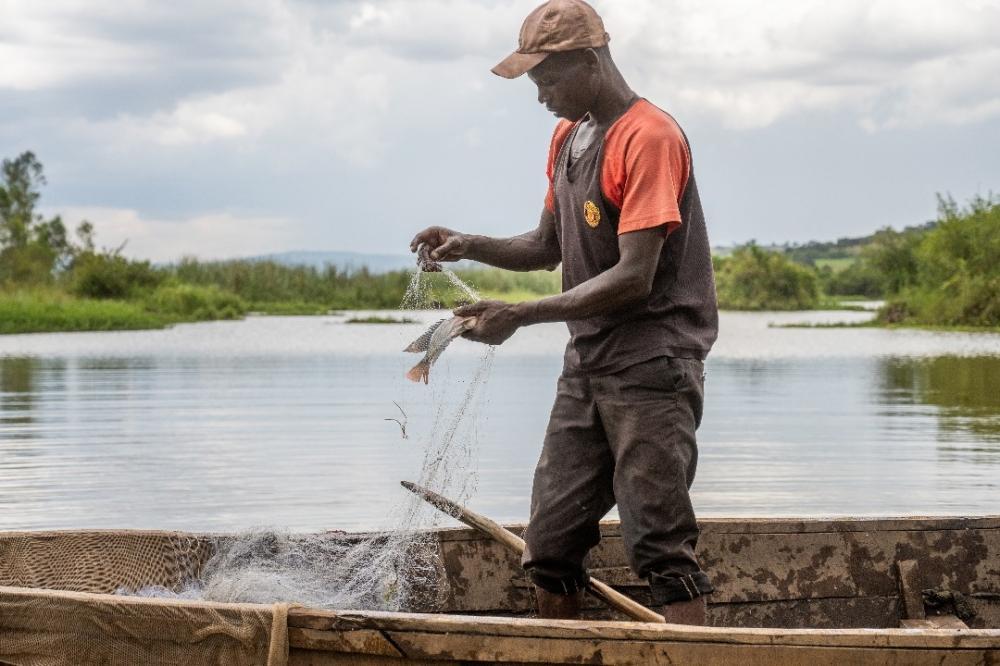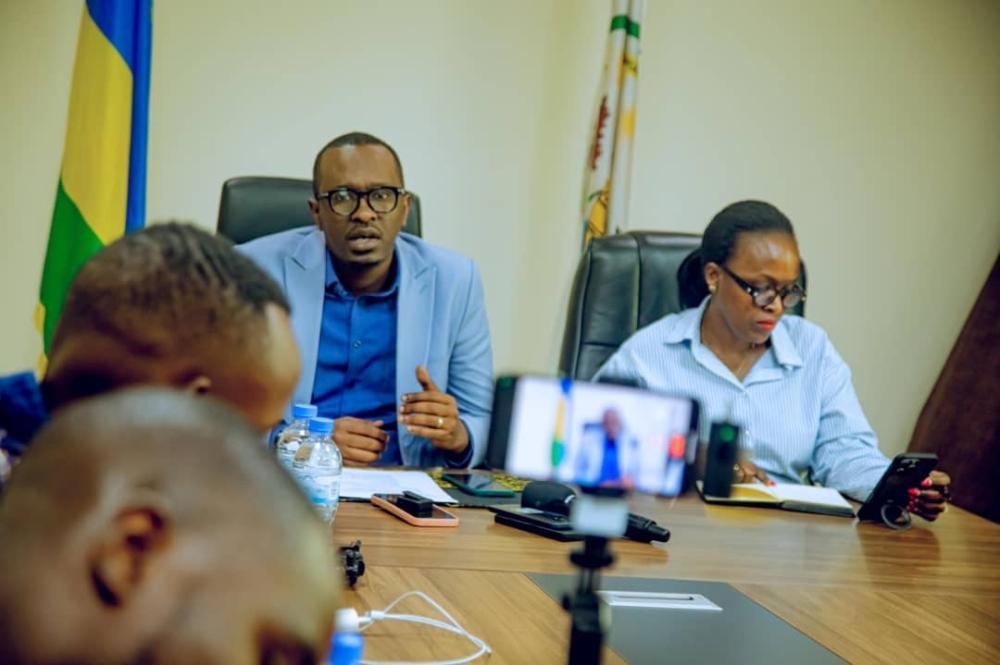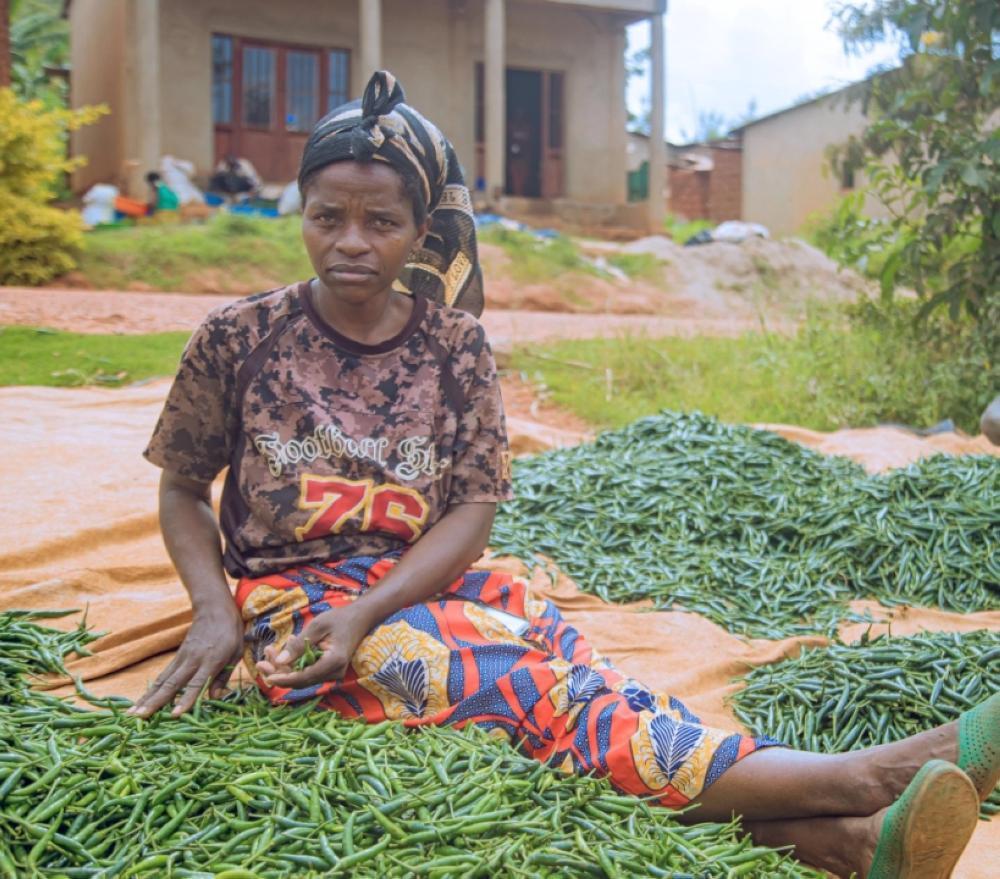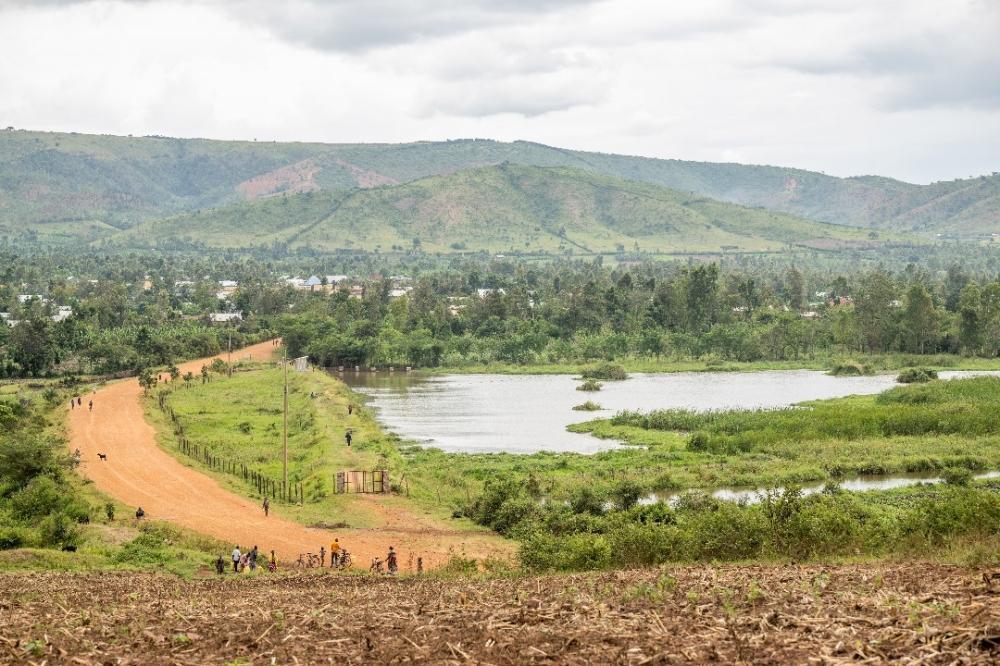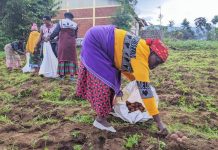Africa-Press – Rwanda. When Akagera National Park completed the fencing of its boundaries, it marked a milestone in the conservation of one of Rwanda’s most treasured ecosystems.
The move was designed to reduce unsustainable practices, particularly illegal fishing, that had long threatened the park’s delicate ecological balance. But for many families living near the park, the fencing also meant the end of a vital food source.
Fishing had not only provided income—it was also a primary source of protein for communities in the sectors bordering the park. Outside the park, nearby fish ponds had also suffered from overfishing, leaving locals with few alternatives.
Recognising that food is a basic human right, and in line with its broader responsibility to contribute to community development, Akagera National Park began exploring sustainable alternatives. The solution came in setting up Gishanda Fish Farm.
Established in Kabare Sector, Kayonza District, Gishanda Fish Farm was created with a dual purpose—to support conservation goals while addressing food insecurity in surrounding communities, according to Fiston Ishimwe, Akagera National Park’s Community Development Manager.
“We established Gishanda Fish Farm with the goal of producing 30 tons of fish annually, sold at a 50 percent discount to support local communities, and to supply fingerlings to nearby fishing cooperatives. Since production began in 2023, we’ve distributed about 300,000 fingerlings each year to ponds and lakes—reaching a total of 600,000 across eight lakes so far.”
Though it may seem unusual for a national park to venture into aquaculture, residents in the area of its operation said that the fish farm has become a lifeline for them.
“Fish consumption is booming here. We buy affordable fish right from the deck uphill. My child was malnourished, but she’s healthy now. Even ECDs serve fish from the farm—it’s really improved our nutrition,” shared Aline Niyingabira, a local resident and mother.
Beyond boosting nutrition, the farm has created jobs and fostered educational partnerships with nearby universities, while also modeling for how conservation and development can go hand-in-hand.
Ishimwe notes that the initiative is contributing significantly to Rwanda’s national fish basket. “Based on last year’s results, the restocked lakes were able to yield 19 tons of fish from eight lakes that previously had no fish,” he said.
Fiston Ishimwe, Akagera National Park’s Community Development Manager, said that So far, the fish farm has supplied over 2 million fingerlings across Rwanda, and more than 50 tons of fish have been supplied.
“Since May alone, 8 tons have already been harvested. So far, the fish farm has supplied over 2 million fingerlings across Rwanda, and more than 50 tons of fish have been added to the national fish production since operations began in 2023.”
Three cooperatives are now using these fingerlings to restock their own ponds.
Benefits of the fish farm to the communities have gone beyond just fish. The infrastructure needed to run the farm has brought broader development to the region.
If it wasn’t for the park to invest in the Fish farm, Venuste would be unemployed as he used to be, he told The New Times that: “ I have been working here for six months, but the development I am achieving, I never had it before. I managed to buy a goat, paid health insurance for a family of three and saved some money on my mobile money.” Venuste’s task is to filter fish food for fingerlings.
Additionally, the electricity required for the farm led to the installation of a transformer that now supplies power to surrounding villages.
A new 15-ton-capacity bridge now connects the sectors of Rwinkwavu and Kabare, easing the movement of goods and people and stimulating local trade. This transformation is part of a larger pattern of reinvestment by Akagera National Park in its neighboring communities.
John Bosco Nyemazi, Kayonza District mayor, speaking to journalists last week said that host communities have benefited from revenue sharing scheme, where schools, markets, electricity connections have been constructed.
According to John Bosco Nyemazi, Mayor of Kayonza District, the park’s -revenues and its benefits to locals—have seen steady growth over the past three years. “In 2021/2022, we received Rwf 341 million. By 2023/2024, it had risen to Rwf 540 million, and in 2024/2025, we expect Rwf 780 million,” he said.
“These funds have supported the construction of slaughterhouses, schools, markets like the one in Kageyo (Mwiri Sector), and essential services for over 340 households—including electricity and clean water.”
Efforts to restore the environment have also gained momentum. In a partnership between the district and local residents, 400 hectares of the park’s buffer zone have been replanted with trees—helping to secure both ecological health and community resilience.
Nyemazi emphasised the importance of community participation in conservation. “We encourage the public to continue actively protecting the park because 10 percent of its revenue is reinvested in development initiatives that directly benefit them,” he said.
Aline Niyingabira, a local resident and mother has been benefiting from the price discounts of fish from Gishanda fish farm, enabling her to balance nutrition at her home
Fish ponds and lakes near Akagera National Park are thriving with fish, thanks to an initiative by the park to establish a fingerlings desk in Gishanda, Kabare Sector. Every year 300,000 fingerlings are restocked
In a modest building in Kabare Sector, a worker in a red wool hat crouches over a heap of freshly harvested fish, inspecting each one with care.
For More News And Analysis About Rwanda Follow Africa-Press

